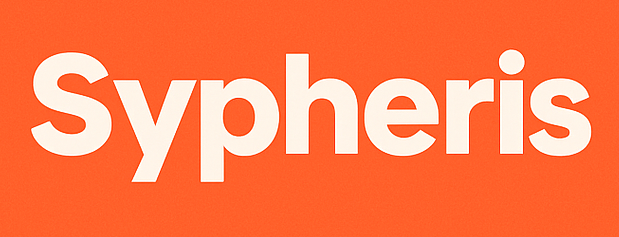Did you know the best way to pay off student loans might actually involve paying as little as $0 per month? That’s right – under Income-Driven Repayment (IDR) plans, some borrowers can qualify for payments that don’t strain their budget at all.
However, navigating how to pay off student loans effectively requires understanding all your options. The newly introduced SAVE plan is being touted as the most affordable student loan repayment plan in history, potentially offering the lowest monthly payments and shorter paths to loan forgiveness. Additionally, simple actions like enrolling in autopay can immediately lower your interest rate, while ensuring you never miss a payment deadline.
Fortunately, there are multiple strategies to make your student loan debt more manageable. From government payment matching for borrowers paying less than $50 monthly to interest waiving that ensures your balance decreases with every payment, the system offers more relief than many realize.
This guide will walk you through practical, stress-free approaches to tackle your student loans in 2025, whether you’re dealing with $10,000 or $100,000+ in education debt.
Get Clear on What You Owe
The first step toward conquering your student debt is knowing exactly what you’re dealing with. Taking inventory of your loans creates a solid foundation for any repayment strategy.
List all your federal and private loans
Begin by gathering all your loan documents in one place. For federal loans, visit studentaid.gov to access your complete loan portfolio. For private loans, check your credit report through annualcreditreport.com to identify all your student loans reported to consumer reporting agencies. Next, create a simple spreadsheet with essential details for each loan:
- Loan name and type (federal subsidized/unsubsidized or private)
- Original loan amount
- Current balance
- Monthly payment amount
- Payment due dates
This organization method helps you track progress and ensures no loan goes overlooked during your repayment journey.
Checkout Our Private Loan Providers List.
Know your interest rates and loan types
Understanding how interest accumulates on your loans is crucial for developing the best way to pay off student loans. Each loan type has distinct interest characteristics:
- Federal subsidized loans: Government pays interest during school, grace periods, and deferment
- Federal unsubsidized loans: Interest begins accruing immediately after disbursement
- Federal PLUS loans: Interest starts immediately after disbursement
- Private loans: Most begin accruing interest right away
Interest rates for federal loans are standardized and set annually by Congress. For the 2024-25 academic year, Direct Loans for undergraduates have a fixed rate of 6.53%, graduate loans are at 8.08%, and PLUS loans at 9.08%. Private loan rates vary widely based on your credit score, income, and other factors.
Check your loan servicer and repayment plan
Your loan servicer handles billing and other services for your federal student loans at no cost to you. Find your servicer by:
- Visiting your studentaid.gov account dashboard
- Scrolling to the “My Loan Servicers” section
- Or calling the Federal Student Aid Information Center at 1-800-433-3243
Contact your servicer whenever you change personal information, need help making payments, have billing questions, or want to explore different repayment options. Furthermore, keep track of which repayment plan you’re currently enrolled in, as this determines your monthly payment amount and forgiveness timeline.
Consequently, getting organized is the essential first step in how to pay off student loans efficiently and with less stress.
Build a Budget That Works
Creating a functional budget is essential for tackling student loans effectively. Instead of viewing your budget as restrictive, see it as a tool that helps you achieve financial goals, including paying off your education debt.
Track your income and expenses
Initially, you need to understand exactly how much money you have to work with. List all sources of income—salary, passive income, financial aid refunds, or family contributions. Next, track your spending for at least a month to see where your money goes. Record everything from gas purchases to online shopping. This practice alone can significantly reduce debt as you identify non-essential expenses.
Categorize your expenses into three tiers:
- Fixed necessities (rent, utilities, groceries)
- Variable necessities (medical expenses, transportation)
- Discretionary spending (entertainment, dining out)
Set a monthly loan payment goal
Once you understand your financial landscape, determine how much you can realistically allocate toward student loans. The 50/30/20 rule provides a helpful framework: 50% of income for necessities, 30% for wants, and 20% for savings and debt repayment. If paying down student loans is your priority, you might adjust these percentages, allocating more toward debt reduction.
Remember to include savings as a fixed expense in your monthly budget—aim to build an emergency fund covering 3-6 months of expenses. This prevents you from accumulating more debt when unexpected costs arise.
Adjust your due date to match your pay schedule
Request a payment due date that aligns with your pay schedule. If you receive biweekly paychecks, having loan payments due shortly after payday ensures funds are available. This simple adjustment can make maintaining your budget much easier and prevent missed payments.
By reviewing your budget periodically and treating your student loan payments as non-negotiable expenses, you establish the foundation for the best way to pay off student loans without unnecessary financial stress.
Use Smart Repayment Strategies
Once you’ve organized your loan information and created a budget, implementing strategic repayment tactics will accelerate your debt payoff journey. Small changes to how you manage payments can save thousands over the life of your loans.
Set up autopay to lower your interest rate
Enrolling in automatic payments offers an immediate 0.25% interest rate reduction on federal student loans. This discount remains in effect as long as you actively participate in the program. For a typical 2019 graduate with about $28,950 in loans, this small reduction could save approximately $423 over a standard 10-year repayment period. Moreover, autopay ensures you never miss deadlines, protecting your credit score.
Make extra payments toward high-interest loans
Making additional payments beyond your minimum requirement is one of the most effective strategies to reduce your debt faster. For these extra payments to work efficiently, specifically request your servicer to apply them to your highest-interest loans first. Also crucial: instruct your servicer to apply overpayments directly to your principal balance rather than advancing your due date for the following month. Even modest additional amounts make a difference – an extra $75 monthly on a $20,000 loan with 5% interest would save $1,786 in interest and cut three years off your repayment timeline.
Avoid deferment and forbearance when possible
Although temporarily pausing payments might seem helpful during financial difficulties, both deferment and forbearance cause interest to continue accruing. For example, if you have a $30,000 unsubsidized loan at 6% interest and enter forbearance for one year, you’ll accrue $1,800 in additional interest. This non-capitalizing interest increases your total payment amount and extends your repayment period.
Use windfalls like tax refunds to pay down debt
The average tax refund in 2019 was $2,860 – a substantial sum that could significantly reduce your loan balance. When applying a refund to your loans, you have three strategic options:
- Apply the entire amount to your highest-interest loan to maximize interest savings
- Target your lowest-balance loan to eliminate it completely
- Distribute the refund across multiple loans
Explore Forgiveness and Income-Based Options
For many borrowers, forgiveness programs offer the ultimate way to manage student debt effectively. These options can dramatically reduce what you pay overall.
Understand the SAVE and IDR plans
Income-driven repayment (IDR) plans cap your monthly payments based on your income and family size. Under certain IDR plans, your monthly payment could be as low as $0.00. The SAVE (Saving on a Valuable Education) plan is particularly generous – borrowers earning less than about $32,800 individually or $67,500 for a family of four qualify for $0 monthly payments. Most other borrowers see payments cut by at least half. After making payments for 10-25 years (depending on the plan and loan amount), any remaining balance is forgiven. Notably, loans of $12,000 or less can be forgiven after just 10 years of payments.
See if you qualify for Public Service Loan Forgiveness
Public Service Loan Forgiveness (PSLF) erases your remaining federal student loan balance after 120 qualifying monthly payments (10 years) while working full-time for eligible employers. To qualify, you must:
- Work for a U.S. government agency or qualifying nonprofit organization
- Have Direct Loans (or consolidate other federal loans into Direct Loans)
- Make payments under an income-driven repayment plan
- Be employed full-time by a qualifying employer
The Biden administration has already forgiven $78.46 billion for over 1 million borrowers through PSLF, averaging about $73,400 per borrower.
Use the Loan Simulator to compare plans
The Department of Education’s Loan Simulator helps identify which repayment plans fit your situation best. This free tool estimates potential forgiveness amounts, shows if consolidating loans would benefit you, and demonstrates how making additional payments affects your principal and interest. Essentially, it helps you determine if you’re eligible for $0 monthly payments under IDR plans.
Know how to recertify your income annually
To remain on an IDR plan, you must recertify your income and family size yearly. Your loan servicer will contact you about a month before your recertification deadline. Missing this deadline could increase your monthly payment dramatically or remove you from the plan altogether. Fortunately, you can recertify online in minutes using the recertification form at studentaid.gov/idr.
Conclusion
Student loan repayment doesn’t need to feel like an overwhelming mountain to climb. Throughout this guide, you’ve discovered practical approaches to tackle your education debt head-on while maintaining financial stability.
First and foremost, getting organized by listing all your loans, understanding interest rates, and identifying your servicers creates the foundation for effective repayment. Additionally, a realistic budget aligned with your income ensures you can meet obligations without unnecessary stress.
Smart repayment tactics certainly make a significant difference. Autopay enrollment immediately reduces your interest rate, while strategic extra payments toward high-interest loans can save thousands over time. Windfalls like tax refunds serve as powerful tools to accelerate your debt payoff journey.
Perhaps most importantly, government programs offer substantial relief for many borrowers. The SAVE plan might allow you to make payments as low as $0 monthly while still progressing toward forgiveness. Public Service Loan Forgiveness potentially eliminates remaining balances after just 10 years of qualifying payments.
Remember, student loan repayment represents a marathon rather than a sprint. Therefore, consistency matters more than speed. Each payment brings you closer to financial freedom, whether you’re tackling $10,000 or $100,000+ in education debt.
Above all, stay informed about your options. Loan forgiveness programs, repayment plans, and interest reduction strategies continue evolving. Your proactive approach to understanding these options allows you to craft the most advantageous path forward.
Armed with these strategies, you can face your student loans with confidence rather than anxiety. The road to becoming debt-free might be shorter than you think.
FAQs
Q1. How can I lower my student loan interest rate? One effective way to reduce your interest rate is by enrolling in autopay. This typically offers a 0.25% interest rate reduction on federal student loans. Additionally, making extra payments towards high-interest loans and avoiding deferment or forbearance when possible can help minimize the overall interest you pay.
Q2. What is the SAVE plan for student loan repayment? The SAVE (Saving on a Valuable Education) plan is a new income-driven repayment option that can significantly reduce monthly payments for many borrowers. It offers $0 monthly payments for individuals earning less than about $32,800 annually or families of four earning less than $67,500. Most other borrowers see their payments cut by at least half under this plan.
Q3. How does Public Service Loan Forgiveness (PSLF) work? PSLF erases your remaining federal student loan balance after 120 qualifying monthly payments (10 years) while working full-time for eligible employers. To qualify, you must work for a U.S. government agency or qualifying nonprofit organization, have Direct Loans, make payments under an income-driven repayment plan, and be employed full-time by a qualifying employer.
Q4. What should I do if I can’t afford my student loan payments? If you’re struggling with payments, explore income-driven repayment (IDR) plans. These plans cap your monthly payments based on your income and family size, potentially lowering them to as little as $0 per month. Use the Department of Education’s Loan Simulator to compare different repayment options and find the best fit for your financial situation.
Q5. How often do I need to recertify my income for IDR plans? You must recertify your income and family size annually to remain on an income-driven repayment plan. Your loan servicer will contact you about a month before your recertification deadline. It’s crucial to complete this process on time to avoid potential increases in your monthly payment or removal from the plan. You can recertify online using the form at studentaid.gov/idr.
Explore More Student Finance Guides:
- Best Credit Cards for Students in 2025
- Understanding Your Student Loan
- Budgeting Tips for College Students
- How to Save Money in College
- Best student Bank Accounts In 2025



